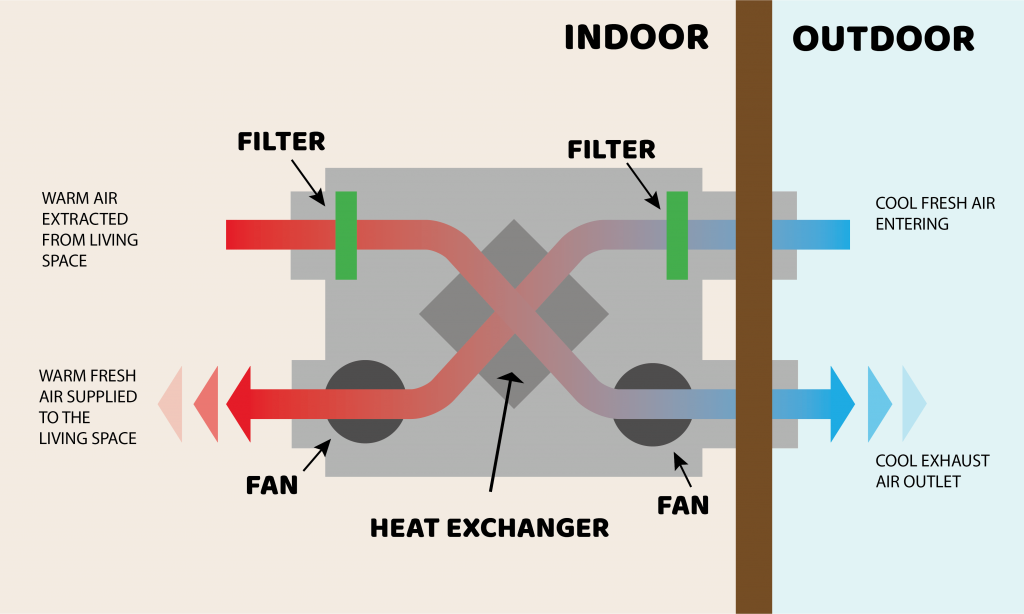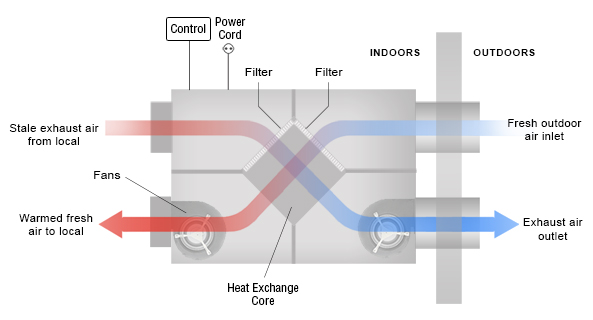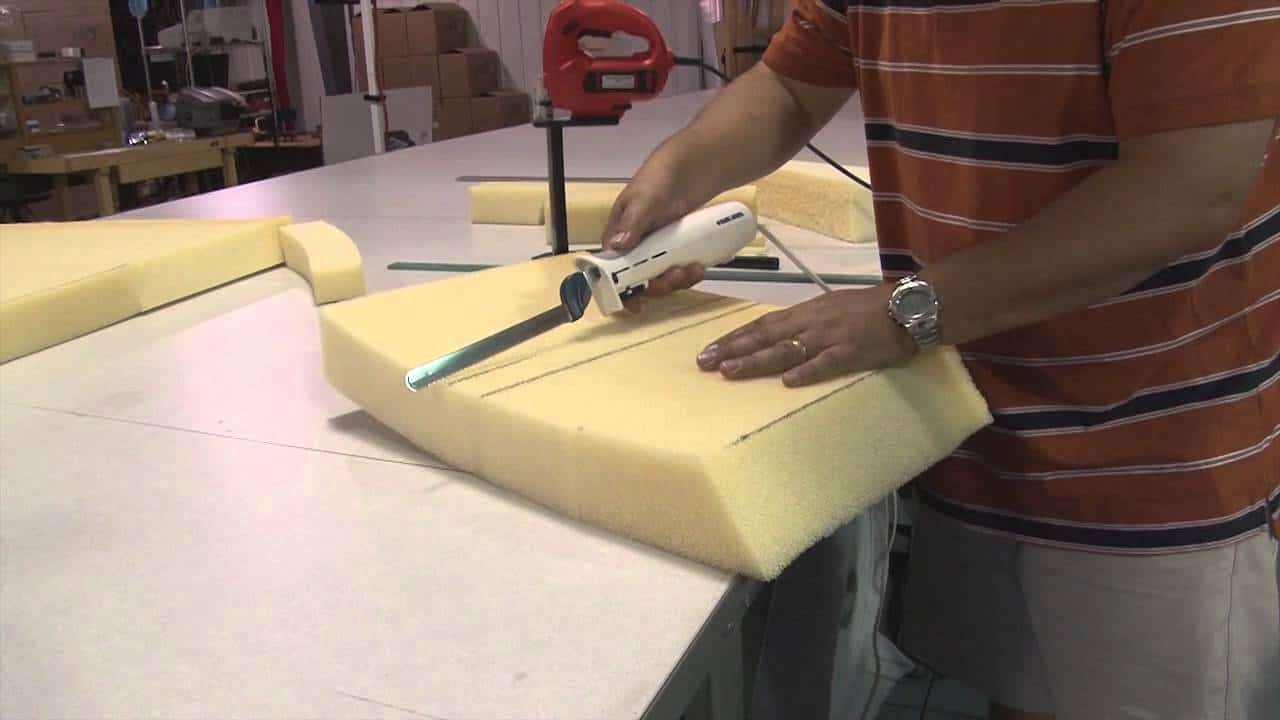The heat recovery system is a good technology that has more efficiency than the normal ventilation systems that are used for many different homes. Heat recovery systems can do most of the work for example a good system can give high-quality air circulation, and with the help of different technologies, you can do various tasks like filtering air, preheating fresh air, and also maintaining an optimal temperature of your favorite room setting.
These systems make your home very comfortable by giving you different possibilities that help to complete your ventilation needs.
Understand Your Heat Recovery System
The first step to optimizing the efficiency of your heat recovery system is to understand the system itself. There are several heat recovery systems, each with unique components and operating principles.
- Air-to-air heat recovery systems – These systems transfer heat between outgoing and incoming building air that needs a proper heat exchanger. Today such systems can create efficient heat transfer which can save energy costs.
- Air-to-water systems creating heat transfer from air to water has more benefits that can help in building heating. Today, such systems need proper understanding of components and they need good equipment for hot water production.
- Water-to-water systems- Heat exchange between water streams is very efficient and helps in building temperature control. Different components is used and with the help of proper heat exchangers they make very efficient systems.
Regardless of your heat recovery system type, it’s essential to understand its components and operating principles. These systems contain a heat exchanger, fan or blower, and ductwork for proper operation.
The heat exchanger is the component that has more importance than normal devices that are used for heat transfer work. Heat exchanger can transfer heat, with the help of a fan and ductwork you can move air through the system.
Know The Required Airflow

Image Credit: great-home.co.uk
Before looking at which systems are available, you need to know how much air you need to exhaust and how much fresh air to bring in. Ventilation calculation can do most of the work with different methods like area method, air exchange method, and occupancy method.
The air exchange method uses the total volume of the area to be ventilated and heated.
works with space measurement in square feet or meters that need proper planning. Also occupancy method is important as they take number of people and use proper calculation to find ventilation rate.
The last method is the heat removal method. This considers the temperature difference between inside and outside air. Today, such calculations need proper understanding of heat extraction and initially they need good planning for reverse application too.
Select Efficient Equipment
A heat recovery system can save you a lot of money in energy costs, but that will only happen if you choose an efficient one. Efficiency means the equipment should give you outstanding performance while using as little power as possible.
Heat recovery systems are tested and certified by relevant bodies depending on where you are located. Reputable retailers will also show the testing results for each heat recovery system they sell. If they don’t, you can always ask the company to supply them before buying one.
Ensure Proper Placement of Exhaust Points
You should locate the ideal place to put your exhaust points to get the most out of your heat recovery system. Exhaust points can do most of the work for example a good exhaust point can give high quality ventilation in moisture areas like utility room, kitchen, and bathroom, with the help of different-different locations you can do various tasks like proper air circulation in living room.
Locate The Best Air Supply Points
You should locate fresh air supply points to ensure you get as much air as possible. Such points need proper distance from exhaust points and initially they need good placement in living rooms and bedrooms. These points make your ventilation very effective by giving you different-different possibilities which help to complete your task.
Because incoming air has one or two degrees less temperature than inside air that is very important for comfort. Also people are benefited from this as they take proper placement away from sitting and sleeping areas.
High placement of supply points helps in proper air mixing that is very useful for circulation. This system according to experts is extremely crucial to ventilation and this proves just how important proper planning is and how they sustain comfortable environment.
A heat recovery system can ensure the wet room in the home remains ventilated and the temperature stable. Choosing an efficient system and carefully considering exhaust and supply points will yield the best results.
How Do Heat Recovery Systems Work?

Image Credit: wikipedia.com
Heat recovery systems capture waste heat from various sources and use it to preheat or precool air or water for other applications. Here is how heat recovery systems work:
a). Heat source
The first step is to identify a heat source that can be used to recover heat. Heat source can be found in many places for example a good heat source can be exhaust air from HVAC systems, with the help of different processes you can get heat from industrial processes, and also from machinery-generated heat.
b). Heat Exchanger
The next step is to transfer the recovered heat to another medium, such as air or water, using a heat exchanger. Heat exchangers can transfer heat between different mediums without mixing, with the help of different types like plate and rotary heat exchangers you can do various tasks safely. These exchangers make heat transfer very efficient by giving you different possibilities.
c). Preheating or Precooling
Secondary medium usage adds many benefits to heat recovery. Today, such medium can be used for preheating or precooling and initially, they need proper planning for applications like boiler water preheating and now HVAC air preheating too.
d). Recirculation
Heat recirculation is very useful in the same system processes. Different methods are used and with the help of proper techniques, they make a very efficient system that is very useful for reducing the load on equipment. Also, systems benefit from this as they take recovered heat and use proper techniques to complete the process.
These systems according to experts are extremely crucial to different industries and this proves just how important proper heat recovery is and how they sustain energy efficiency traditions in HVAC systems, industrial processes, and power generation.
What Are the Advantages of Heat Recovery Ventilation Systems?

Image Credit: pureventilation.com
Heat recovery ventilation (HRV) systems have become increasingly popular in office buildings in recent years due to their numerous benefits. Below are some reasons why they are an excellent investment for any building owner or operator.
a). Improved Air Quality
One of the most significant benefits of heat recovery ventilation systems is improved indoor air quality. These systems can do most of the work for example they can remove stale air and bring fresh air, with the help of different filtration you can remove various pollutants like dust, allergens, and also make indoor environment of your building more healthy.
b). Reduced Energy Costs
Energy saving is very important benefit that need proper system working. Systems need heat recovery from outgoing air and initially they need this heat to warm incoming air and now reduce energy bills too. These systems make winter and summer both comfortable by giving you different-different possibilities which help to reduce heating and cooling costs.
c). Increased Comfort
Heat recovery ventilation systems can also increase the comfort levels within a building. Also people are benefited from this as they take fresh air and use proper humidity control to prevent mold growth.
This can help reduce condensation and mold growth in a humid climate, which can cause discomfort and health problems for occupants.
d). Noise Reduction
Heat recovery ventilation systems can also help reduce building noise levels. You find proper sound control like quiet operation and sound-absorbing materials and as such can come in handy in the current building environment. This benefit according to experts is extremely crucial to comfort especially near busy roads.
e). Improved Building Efficiency
Heat recovery ventilation systems can also improve the overall energy efficiency of a building. By reducing the energy required for heating and cooling, these systems can reduce carbon footprint with the help of different technologies you can do various tasks like maintaining temperature and also make beautiful environment of your building more efficient. These systems make large commercial buildings very efficient by giving you different-different possibilities.
This can be especially beneficial for buildings requiring a lot of energy to heat or cool, such as large commercial or industrial buildings.
f). Easy Maintenance
Lastly, heat recovery ventilation systems are easy to maintain. Regular filter changes and cleaning are required to ensure that the system operates efficiently, but this is a straightforward process that a qualified technician can carry out. Proper maintenance can help extend the system’s lifespan and ensure it continues operating at peak efficiency.
Maintenance of Heat Recovery Systems
1. Inspection
The heat recovery system needs regular inspection that has more importance than the normal inspection that is used for many different works.
A good inspection can identify potential issues, with the help of different components you can do various tasks like checking the heat exchangers, fans, and controls and also checking air filters for proper functioning. These inspections make your system very efficient by giving you different possibilities.
2. Cleaning
Cleaning in heat recovery system increase efficiency and performance. Today, such systems need proper cleaning of heat exchanger and initially they need removal of dust and dirt and now proper maintenance too. These cleanings convey many things such as, removing debris and also natural elements like proper scheduling which symbolize good maintenance. This cleaning according to experts needs twice yearly maintenance.

Image Credit: airtecnics.com
3. Replacement of Parts
Over time, some heat recovery system components may become worn out or damaged. It is important to promptly replace these components to avoid further damage and ensure the system operates efficiently. Standard components that may need to be replaced include filters, belts, and bearings. The replacement frequency will depend on the specific system and usage, but it is generally recommended that components be replaced at least once a year.
4. Regular Servicing
Heat recovery systems are recommended to undergo regular servicing by a qualified technician. This can help identify potential issues before they become significant problems and ensure the system operates efficiently. How often servicing occurs will depend on the specific system and usage, but it is generally recommended to be serviced at least once a year.
In addition to these maintenance tasks, it is also important to monitor the performance of the heat recovery system regularly. This can be done by monitoring energy consumption and comparing it to historical data or industry benchmarks. Any significant changes in energy consumption should be investigated to identify the cause and take corrective action.
Conclusion on Heat Recovery Systems
A heat recovery system is a smart technology that has more efficiency than the normal systems that are used for many different works. Heat recovery system can do most of the work for example a good system can give high-quality performance, with the help of different methods you can do various tasks like saving energy, reducing costs, and also making a beautiful impact on the environment. These systems make your building very efficient by giving you different possibilities which help to complete your energy saving goals.













